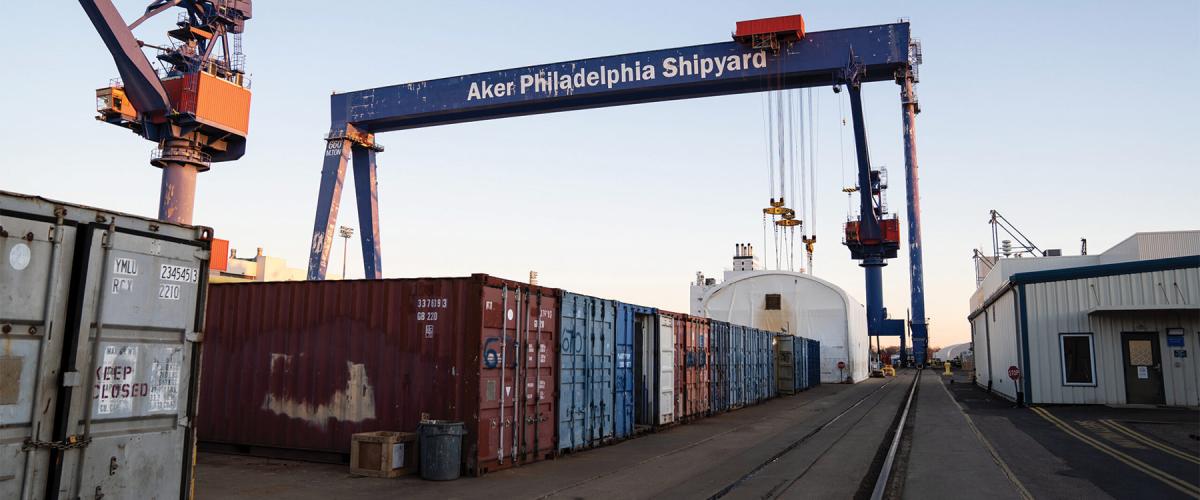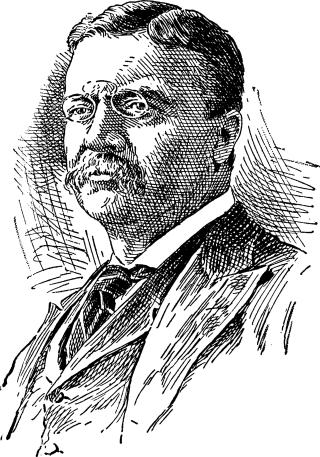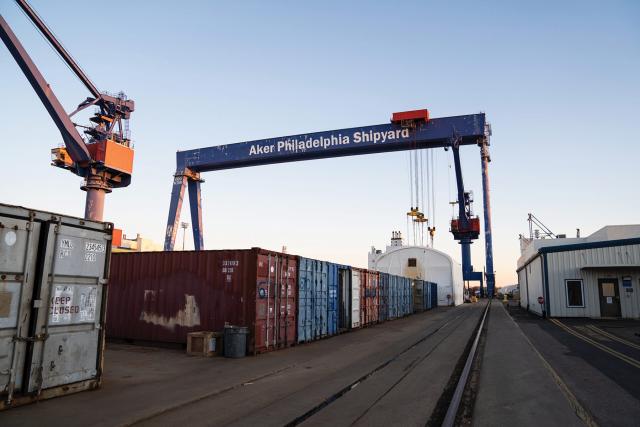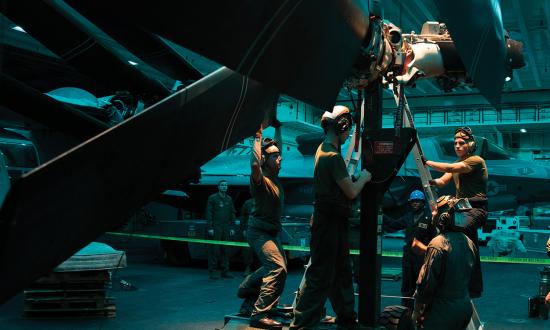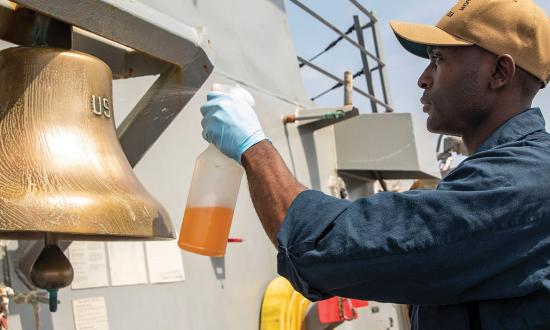It is by no means necessary that a great nation should always stand at the heroic level. But no nation has the root of greatness in it unless in time of need it can rise to the heroic mood.1
—Theodore Roosevelt
The deployment of the Great White Fleet heralded the dawn of great power status for the United States after the Spanish-American War. The worldwide voyage showcased President Theodore Roosevelt’s investment in U.S. naval power and highlighted the nation’s industrial prowess. Eighteen ships were built between the end of the Spanish-American War in 1898 and the 14-month circumnavigation around the world that began in 1907.2 Roosevelt’s intent was to “provide the American people with an example of U.S. naval preparedness, strength and reach,” which he would use to gain appropriations for more shipbuilding. While Roosevelt faced opposition despite the efficient construction of the fleet and the highly anticipated goodwill mission, he remained undeterred. When members of the Naval Affairs Committee threatened to withhold further funding, he told them that “he already had sufficient funding to get the fleet to the Pacific, and if the Congress wanted the fleet to return to the Atlantic, it would have to authorize additional funding.”3
Roosevelt may have railroaded Congress to achieve his goal, but he secured the United States’ new—though still vulnerable—position as a great power with his actions. He understood the critical importance of preparedness even during prolonged periods of peace, and peace was waning in 1907. It would behoove the United States today, during this time of renewed great power competition, to recall that lesson.
The Rise of China
China has experienced significant economic growth since the 1990s, propelled into a higher global status by significant military and economic investments. Meanwhile, the United States has battled multiple economic downturns and failed to make the same level of investment in infrastructure.4 The Sea Services must support immediate and revolutionary changes that will reinvigorate American industrial prowess and repair crumbling infrastructure before it becomes an even greater national security issue. However, the infrastructure plan proposed by President Joseph Biden in November 2021 is a crucial step in the right direction. By modernizing and fortifying critical infrastructure, the plan would not only bolster the economy but also strengthen the nation’s defense capabilities. A resilient and efficient infrastructure is essential to ensuring the United States can respond effectively to emerging challenges.
China is narrowing the United States’ lead as the reigning great power by investing heavily and strategically in shipbuilding. Between 2015 and 2020, China’s naval fleet grew rapidly in terms of numbers of ships while the U.S. Navy was unable to surpass 300 ships. As a result, the People’s Liberation Army Navy (PLAN) now has at least 60 more warships than the U.S. Navy. In addition, China’s three sea forces, which include the PLAN, China Coast Guard, and People’s Armed Forces Maritime Militia (PAFMM), total more than 700 ships.5
A major reason China has been able to grow the PLAN, Coast Guard, and PAFMM so quickly is because it builds more merchant ships than any other nation. The economies of scale achieved in a robust merchant shipbuilding program (in steel production, drydocks, skilled workers, etc.) directly benefit military shipbuilding. The United States had similar advantages in the lead-up to World War II and a few decades after but lost those benefits as merchant ship construction shifted overseas. Unfortunately, the United States has been divesting from shipbuilding since 1970, opening only one new shipyard and shuttering 14.6 As a result, the Navy is struggling to modernize and grow without the needed shipbuilding capacity.
U.S. Infrastructure
Just as shipbuilding directly affects the Sea Services, the decline of other industries further diminishes the United States’ great power status. The railroad was an invaluable asset for mobilization during World War II, rapidly moving troops and supplies around the country. However, railroad travel declined by 84 percent between 1945 and 1964, leading to a reduction in route miles and lines.7 The construction of the interstate highway system also contributed to railroad decline, which has had far-reaching effects on U.S. culture, economy, and national security. The overreliance on highways creates vulnerabilities in times of crisis or conflict, when diverse and resilient transportation networks are essential. In the event of a disruption to the highway system, the ability to swiftly move military assets, personnel, and supplies could be compromised, affecting national defense readiness.
Similar to Roosevelt, President Dwight D. Eisenhower steamrolled past critics with the Federal-Aid Highway Act, selling it as a national security measure necessary in the event of evacuation. Eisenhower was inspired by his experience in a military convoy in 1919, when he witnessed the poor condition of national roadways. When he returned to Europe during World War II, he was impressed by the roadways there and knew the United States needed to take action to remain similarly competitive. Today, the U.S. highway system is in disrepair, requiring an expensive overhaul that could cost as much as $1 trillion.8
Beyond hindering mobilization, crumbling infrastructure creates issues for the Sea Services in maintaining and constructing naval vessels, leading to operational delays. Outdated communication and energy infrastructure creates vulnerabilities in strategic planning and defense operations, while inadequate cybersecurity measures expose critical systems to cyber threats.9 The Biden administration’s infrastructure plan is timely and aligns with Eisenhower’s vision for a strong and resilient nation.
Looking Forward
While U.S. infrastructure problems extend beyond the Sea Services, the Sea Services’ top leaders must emphasize the critical role of a robust transportation network in national defense. Furthermore, they must highlight how modernized ports and shipyards are essential for the efficient deployment, maintenance, and strategic positioning of naval assets. Investment in infrastructure, especially in shipbuilding and sectors that affect mobilization, is a proven method to shift the balance of power. In an era of evolving security challenges, a strong and modernized infrastructure at home is essential for strategic movements, rapid response capabilities, and national defense readiness.
1. Theodore Roosevelt, Fear God and Take Your Own Part (New York: Cosimo Classics, 2005), 350.
2. Office of the Historian, “1989: The Birth of a Superpower,” U.S. Department of State.
3. Michael J. Crawford, ed., The Great World Cruise of the Great White Fleet: Honoring 100 Years of Global Partnerships and Security (U.S. Naval Historic Center, 2008).
4. Conor Savoy and Janina Staguhn, “Global Development in an Era of Great Power Competition,” CSIS.org, 24 March 2022.
5. Andrew S. Erickson, “A Guide to China’s Unprecedented Naval Shipbuilding Drive,” The Maritime Executive, 11 February 2021.
6. Brent Sadler, “For the Larger Navy U.S. Needs, American Shipping and Shipbuilding Must Be Revived,” The Heritage Foundation, 27 October 2022.
7. Editors of Publications International, Ltd., “Modern Decline of Railroads,” HowStuffWorks, 18 April 2008.
8. Timothy L. O’Brien and Nir Kaissar, “Note to Biden on Infrastructure: Be like Ike,” Bloomberg, 1 April 2021.
9. CAPT Dane Egli, USCG, “The United States Must Defend Critical Infrastructure,” U.S. Naval Institute Proceedings 149, no. 12 (December 2023).



